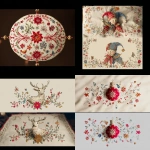Explore the Best AI Image Gallery

Beyond the Canvas: Wearable Techs Transformative Impact on Creative Expression
The realm of creativity is constantly evolving, propelled by technological advancements that redefine artistic expression. Among these innovations, wearable technology stands out as a particularly transformative force, blurring the lines between the physical and digital worlds and empowering artists with unprecedented tools for creation and interaction.
A New Dimension of Creative Expression
Wearable devices, such as smart glasses, augmented reality (AR) headsets, haptic suits, and motion sensors, are revolutionizing how we create and experience art. These technologies offer a range of unique possibilities:
- Immersive Artistic Experiences: AR/VR headsets can transport viewers into immersive art installations, allowing them to interact with virtual environments and artworks in unprecedented ways. Imagine stepping inside a painting or manipulating 3D sculptures with your hands.
- Real-Time Creative Input: Wearable sensors can capture and translate human movement, emotions, and even brainwaves into artistic expressions. This opens doors for performance art, interactive installations, and generative art where the artists body becomes an instrument of creation.
- Personalized Artistic Experiences: Wearables can tailor art experiences to individual preferences. Imagine AR glasses that display personalized artwork based on your mood or musical taste, creating a unique and engaging interaction with art.
Expanding Creative Industries
The impact of wearable tech extends beyond traditional art forms, influencing various creative industries:
- Fashion Design: Wearable technology is transforming fashion into an interactive medium. Smart clothing with embedded sensors can respond to environmental changes or even the wearers mood, creating dynamic and adaptive garments.
- Music Production: Musicians are utilizing wearable sensors and controllers to create new soundscapes and explore innovative performance techniques. Imagine composing music using your body movements or controlling instruments with gestures.
- Filmmaking and Storytelling: AR/VR technologies are revolutionizing film production and storytelling. Viewers can step inside immersive worlds, interact with characters, and experience narratives in entirely new ways.
Ethical Considerations
As wearable tech continues to permeate the creative landscape, its crucial to address the ethical implications:
- Data Privacy: Wearables collect vast amounts of personal data. Ensuring responsible data handling, user consent, and transparency is paramount.
- Accessibility and Inclusion: Creative technologies should be accessible to everyone, regardless of their physical abilities or socioeconomic background. Designing inclusive wearable solutions is essential.
- Algorithmic Bias: AI algorithms used in creative applications can perpetuate existing biases. Its crucial to develop fair and unbiased algorithms to ensure equitable representation and prevent discrimination.
Future Trends
The future of wearable tech in the creative industry is brimming with possibilities:
- Brain-Computer Interfaces (BCIs): BCIs could allow artists to control digital tools and express their creativity directly through their thoughts, unlocking a new level of artistic potential.
- Personalized Art Experiences: Wearables will enable hyper-personalized art experiences tailored to individual preferences, tastes, and emotions.
- Collaborative Creativity: Wearable technology will facilitate collaborative creative projects, connecting artists across geographical boundaries and enabling real-time collaboration on shared artworks.
Conclusion
Wearable technology is reshaping the creative landscape, empowering artists with innovative tools and blurring the lines between the physical and digital worlds. As this technology continues to evolve, it promises to unlock new dimensions of creative expression, expand creative industries, and redefine our relationship with art.



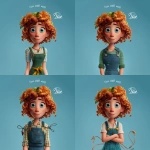

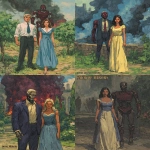



](https://images.ai-img.art/thumbnails/150/e6a179db327f0374ec327d0fdab48ac1f2dc47123eed103b0a41ed346280d07d.webp)


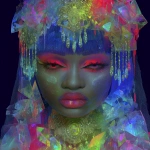








](https://images.ai-img.art/thumbnails/150/60973df1d727dbbf8e6922b7e4836814ab6012106eb9dcfe99aea7aec15f3710.webp)
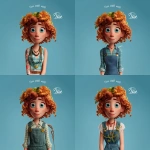




](https://images.ai-img.art/thumbnails/150/655229c40961cb7ff5abd4b4190e02c94ea1a961106e7547a562649c945268be.webp)


](https://images.ai-img.art/thumbnails/150/26c16e4f635deee86633de398088ca98d9bb748d6e7601436b07e882fab236cb.webp)





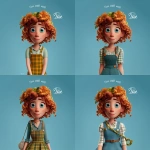
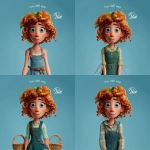
](https://images.ai-img.art/thumbnails/150/6c909fd6d38caac6572b592dd97831deb7d6562bba142798574677582676dfc1.webp)

](https://images.ai-img.art/thumbnails/150/184b4b030e30be0a6d51b544226cb4cf2271977814d935d3aaa2b7529355b3b7.webp)
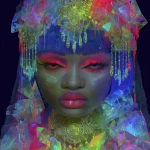
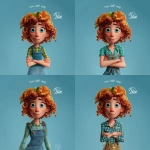
](https://images.ai-img.art/thumbnails/150/1202074d0d60b08b64d0f91f36468608aaac200a02b721cc8e6d8ec8a908432c.webp)



